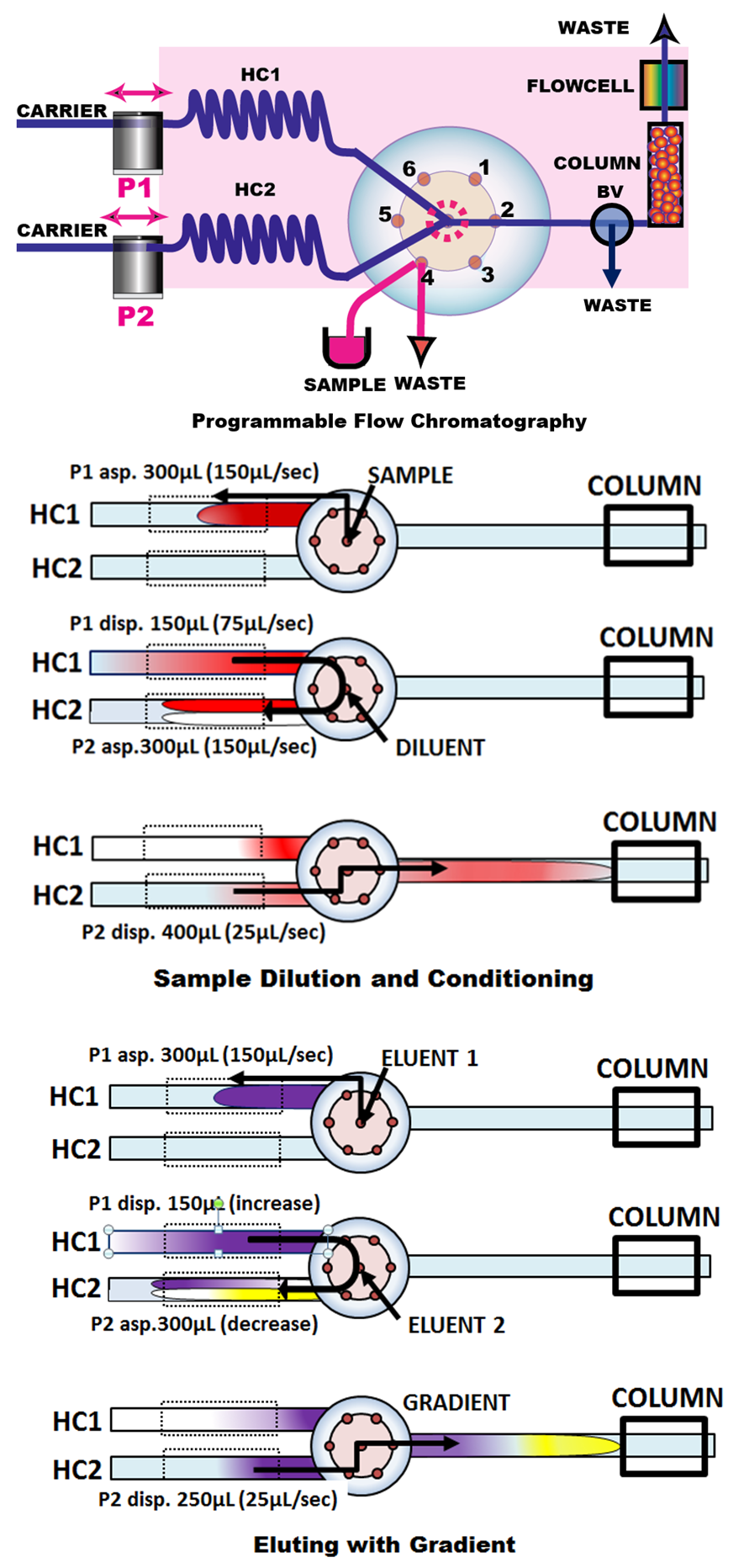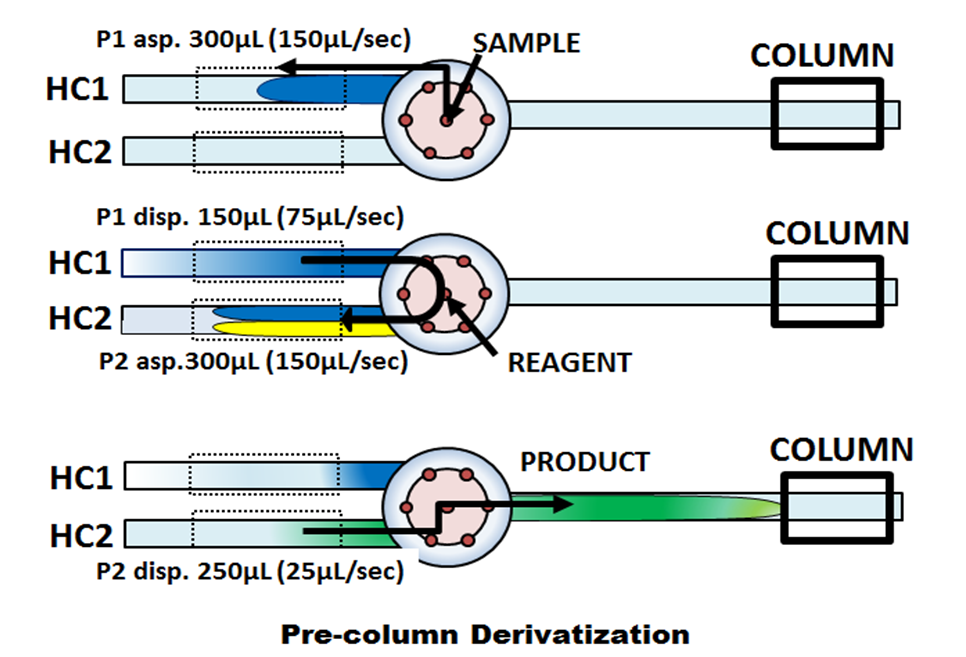4.3.2.
Programmable Flow Chromatography
Integration of pFI manifold with separation column, will remove the drawbacks imposed by SI format, will provide a platform for a wide range of microfluidic manipulations, and will enhance performance of liquid chromatography. In order to distinguish the novel format from SIC and to emphasize its potential, it is suggested here to name this method programmable Flow Chromatography (pFC). Design of instrumentation suitable for pFC, will, of course, face the same challenges as did the development of SIC. The pumps will have to generate sufficiently high pressure, and the flow system must be pressurized (area shaded in red). Also all wetted surfaces will have to withstand aggressive solvents, that are used as eluants.

Mixing of sample with reagents in pF format takes place while the stream passes through the confluence point , on the way into the holding coil. Therefore pFC sample dilution protocol comprises the following steps:
1) Metering of sample into holding coil (HC1).
2) Transfer sample into HC2, while diluent is merged with sample zone at the confluence point in the ratio defined by the difference between forward flowrate of pump #1 (P1) and (faster) aspiration rate of pump #2 (P2).
3) A desirable volume of diluted sample is delivered on the column.
This protocol can also be used for sample conditioning such as adjustment of pH. Pre-column derivatization of sample uses similar protocol, which can be adjusted, if reaction between sample and reagent needs longer incubation time to proceed to a desired degree. This is done by holding reaction mixture in a (thermostated) holding coil #2. In addition to sample treatment, a wide variety of elution gradients can be generated by suitable combination of flowrates and volumes of weak and strong eluant. An example depicted here shows formation of a gradient that will deliver increasing concentration of eluent #1 on the column.










